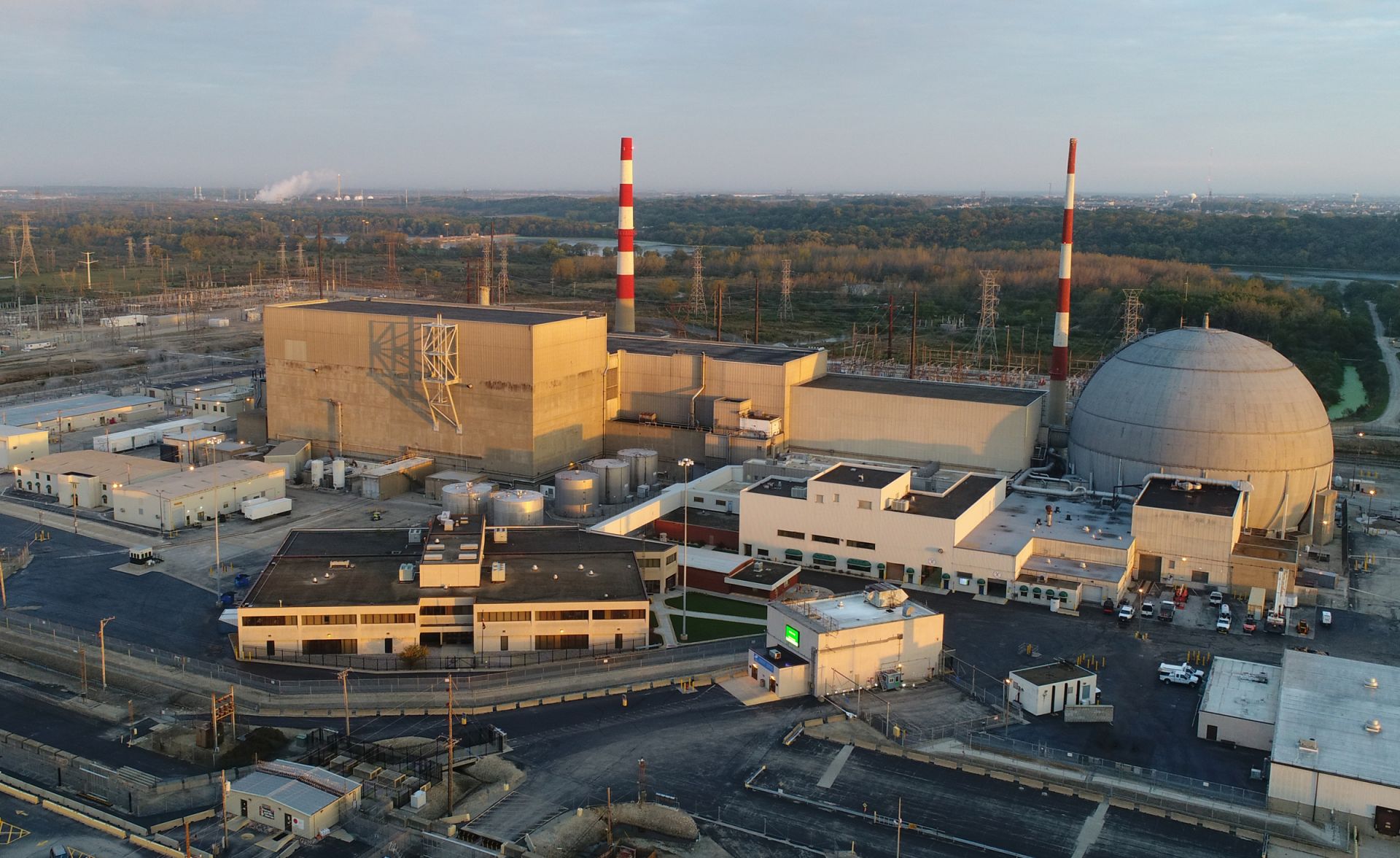Conceptual art of a direct air capture CO2 removal system. (Image: DOE)
Given how much carbon dioxide has been released into the atmosphere from fossil fuels, replacing those fuels with clean options like nuclear energy is urgent, but could be likened to shutting the barn door after the proverbial horse has bolted. But what if you could also round up excess CO2 already in the atmosphere? That’s the goal of direct air capture (DAC) and other so-called negative emission technologies—to capture climate warming CO2 for use in products or processes or for permanent storage.
High-voltage power lines carry electricity generated by the Tennessee Valley Authority to Oak Ridge National Laboratory. (Photo: Dobie Gillispie/ORNL, DOE)
The Tennessee Valley Authority and Oak Ridge National Laboratory have signed a memorandum of understanding to advance decarbonization technologies in pursuit of the federal government’s net-zero-by-2050 goal, the utility and the lab announced yesterday in a joint press release.
A screen capture from the meeting that discussed the pathway to net-zero emissions by 2050: (From left) Leah Parks, Giulia Bisconti, Nicholas McMurray, Josh Freed, and Laura Hermann. Panelists who joined the meeting virtually were Sama Bilbao y León and Edie Greaves.
The Thursday morning executive session at last week’s 2021 ANS Winter Meeting and Technology Expo brought together a group of influential nuclear-policy experts from the United States and abroad to discuss the roles nuclear can play in smoothing the pathway to net-zero emissions by 2050. Specific topics explored included the Clean Energy Ministerial (CEM) and its Nuclear Innovation Clean Energy (NICE) Future initiative, as well as last month’s COP26 climate conference in Glasgow. The session was moderated by Leah Parks, a Nuclear Regulatory Commission risk analyst and 2020 ANS Presidential Citation awardee.
A statement from Steven P. Nesbit, president of the American Nuclear Society, and Lonnie R. Stephenson, international president of the International Brotherhood of Electrical Workers.
September 8, 2021, 6:59AMANS Nuclear CafeSteven P. Nesbit and Lonnie R. Stephenson America’s electric utility workers and nuclear engineers are ready to work together to help rapidly decarbonize and electrify the economy. We welcome provisions in the bipartisan infrastructure bill that aim to prevent premature closures of our nuclear power plants. Through measures such as production tax credits, President Biden can safeguard America’s largest carbon-free energy source by recognizing the clean-air contributions of nuclear energy.
The Dresden nuclear power plant
With essentially no time to spare, the Illinois Senate early this morning passed a clean energy omnibus package that includes $694 million in assistance to three of the state’s financially troubled nuclear plants: Braidwood, Byron, and Dresden. The vote was 39–16. (Both the Senate and House had returned to the capital on Tuesday for a one-day special session to consider legislative redistricting.)
What role will nuclear play in meeting clean energy goals?
The 2021 ANS Annual Meeting brought together three leading chief executive officers from the nuclear industry on June 16 for a discussion centered on the future role of nuclear energy deployment and the challenges of portfolio management during a time of net-zero carbon goals.










 The U.K. government last week announced the release of its
The U.K. government last week announced the release of its  Carbon emission reductions from the power sector are likely to flatline after 2025 unless clean energy innovations and net-zero commitments from utilities pick up steam, concludes a report out this month from ClearPath, a conservative, Washington, D.C.–based clean energy nonprofit organization.
Carbon emission reductions from the power sector are likely to flatline after 2025 unless clean energy innovations and net-zero commitments from utilities pick up steam, concludes a report out this month from ClearPath, a conservative, Washington, D.C.–based clean energy nonprofit organization.


 A new technical report from Montreal-based SNC-Lavalin finds Canada’s stated goal of net-zero carbon emissions by 2050 to be achievable but stresses the importance of immediate action and investment in all forms of low-carbon energy production, including nuclear, hydro, renewables, carbon capture and storage, and hydrogen.
A new technical report from Montreal-based SNC-Lavalin finds Canada’s stated goal of net-zero carbon emissions by 2050 to be achievable but stresses the importance of immediate action and investment in all forms of low-carbon energy production, including nuclear, hydro, renewables, carbon capture and storage, and hydrogen.